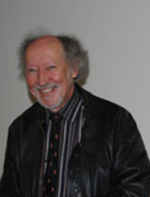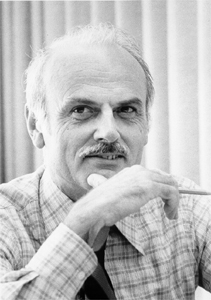Related Research Articles
A relational database is a database based on the relational model of data, as proposed by E. F. Codd in 1970. A system used to maintain relational databases is a relational database management system (RDBMS). Many relational database systems are equipped with the option of using the SQL for querying and maintaining the database.
The relational model (RM) is an approach to managing data using a structure and language consistent with first-order predicate logic, first described in 1969 by English computer scientist Edgar F. Codd, where all data is represented in terms of tuples, grouped into relations. A database organized in terms of the relational model is a relational database.
SQL is a domain-specific language used in programming and designed for managing data held in a relational database management system (RDBMS), or for stream processing in a relational data stream management system (RDSMS). It is particularly useful in handling structured data, i.e. data incorporating relations among entities and variables.

An object–relational database (ORD), or object–relational database management system (ORDBMS), is a database management system (DBMS) similar to a relational database, but with an object-oriented database model: objects, classes and inheritance are directly supported in database schemas and in the query language. In addition, just as with pure relational systems, it supports extension of the data model with custom data types and methods.
Fabian Pascal is a Romanian-American consultant to large software vendors such as IBM, Oracle Corporation, and Borland, but is better known as an author and seminar speaker. Born in Romania, Pascal lives in the San Francisco, CA area of the US, and works in association with Christopher J. Date.

Chris Date is an independent author, lecturer, researcher, and consultant, specializing in relational database theory.

Hugh Darwen is a computer scientist who was an employee of IBM United Kingdom from 1967 to 2004, and has been involved in the development of the relational model.

Edgar Frank "Ted" Codd was an English computer scientist who, while working for IBM, invented the relational model for database management, the theoretical basis for relational databases and relational database management systems. He made other valuable contributions to computer science, but the relational model, a very influential general theory of data management, remains his most mentioned, analyzed and celebrated achievement.
The relational calculus consists of two calculi, the tuple relational calculus and the domain relational calculus, that are part of the relational model for databases and provide a declarative way to specify database queries. The raison d'être of the relational calculus is the formalization of query optimization, which is finding more efficient manners to execute the same query.
First normal form (1NF) is a property of a relation in a relational database. A relation is in first normal form if and only if no attribute domain has relations as elements. Or more informally, that no table column can have tables as values. Database normalization is the process of representing a database in terms of relations in standard normal forms, where first normal is a minimal requirement. SQL-92 does not support creating or using table-valued columns, which means that using only the "traditional relational database features" most relational databases will be in first normal form by necessity. Database systems which do not require first normal form are often called no sql systems. Newer SQL standards like SQL:1999 have started to allow so called non-atomic types, which include composite types. Even newer versions like SQL:2016 allow json.
Dataphor is an open-source truly-relational database management system (RDBMS) and its accompanying user interface technologies, which together are designed to provide highly declarative software application development. The Dataphor Server has its own storage engine or it can be a virtual, or federated, DBMS, meaning that it can utilize other database engines for storage.
In relational databases, relvar is a term introduced by C. J. Date and Hugh Darwen as an abbreviation for relation variable in their 1995 paper The Third Manifesto, to avoid the confusion sometimes arising from the use of the term relation, by the inventor of the relational model, E. F. Codd, for a variable to which a relation is assigned as well as for the relation itself. The term is used in Date's well-known database textbook An Introduction to Database Systems and in various other books authored or coauthored by him.

In SQL, null or NULL is a special marker used to indicate that a data value does not exist in the database. Introduced by the creator of the relational database model, E. F. Codd, SQL null serves to fulfil the requirement that all true relational database management systems (RDBMS) support a representation of "missing information and inapplicable information". Codd also introduced the use of the lowercase Greek omega (ω) symbol to represent null in database theory. In SQL, NULL is a reserved word used to identify this marker.
The object–relational impedance mismatch is a set of conceptual and technical difficulties that are often encountered when a relational database management system (RDBMS) is being served by an application program written in an object-oriented programming language or style, particularly because objects or class definitions must be mapped to database tables defined by a relational schema.
Sixth normal form (6NF) is a term in relational database theory, used in two different ways.
Rel is an open-source true relational database management system that implements a significant portion of Chris Date and Hugh Darwen's Tutorial D query language.
Nikos Lorentzos is a Greek professor of Informatics. He is a specialist on the Relational Model of Database Management, having made contributions in the field of temporal databases, where he has co-authored a book with Hugh Darwen and Christopher J Date.
Single table inheritance is a way to emulate object-oriented inheritance in a relational database. When mapping from a database table to an object in an object-oriented language, a field in the database identifies what class in the hierarchy the object belongs to. All fields of all the classes are stored in the same table, hence the name "Single Table Inheritance". In Ruby on Rails the field in the table called 'type' identifies the name of the class. In Hibernate (Java) and Entity Framework this pattern is called Table-Per-Class-Hierarchy and Table-Per-Hierarchy (TPH) respectively., and the column containing the class name is called the Discriminator column.

In database theory, a relation, as originally defined by E. F. Codd, is a set of tuples (d1, d2, ..., dn), where each element dj is a member of Dj, a data domain. Codd's original definition notwithstanding, and contrary to the usual definition in mathematics, there is no ordering to the elements of the tuples of a relation. Instead, each element is termed an attribute value. An attribute is a name paired with a domain. An attribute value is an attribute name paired with an element of that attribute's domain, and a tuple is a set of attribute values in which no two distinct elements have the same name. Thus, in some accounts, a tuple is described as a function, mapping names to values.
Object-oriented programming (OOP) is a programming paradigm based on the concept of "objects", which can contain data and code: data in the form of fields, and code, in the form of procedures.
References
- C. J. Date and Hugh Darwen (2007, Addison-Wesley) Databases, Types, and the Relational Model: The Third Manifesto, a third edition superseding first and second editions that are the two books listed below. ISBN 0-321-39942-0
- Date, C. J.; Darwen, Hugh (1998). Foundation for object/relational databases: The Third Manifesto: a detailed study of the impact of objects and type theory on the relational model of data including a comprehensive proposal for type inheritance (1st ed.). Reading, MA: Addison-Wesley. xxi, 496. ISBN 0-201-30978-5. LCCN 98010364. OCLC 38431501. LCC QA76.9.D3 D15994 1998.
- Date, C. J.; Darwen, Hugh (2000). Foundation for Future Database Systems: The Third Manifesto: a detailed study of the impact of type theory on the relational model of data, including a comprehensive model of type inheritance (2nd ed.). Reading, MA: Addison-Wesley Professional. xxiii, 547. ISBN 0-201-70928-7. LCCN 00035527. OCLC 43662285. LCC QA76.9.D3 D3683 2000.